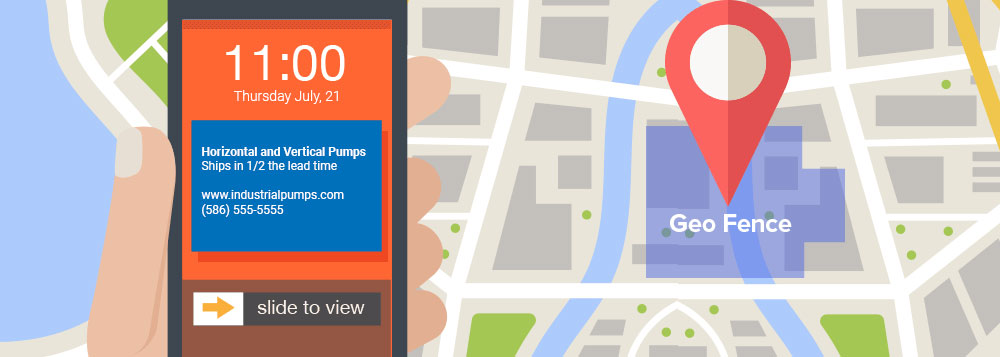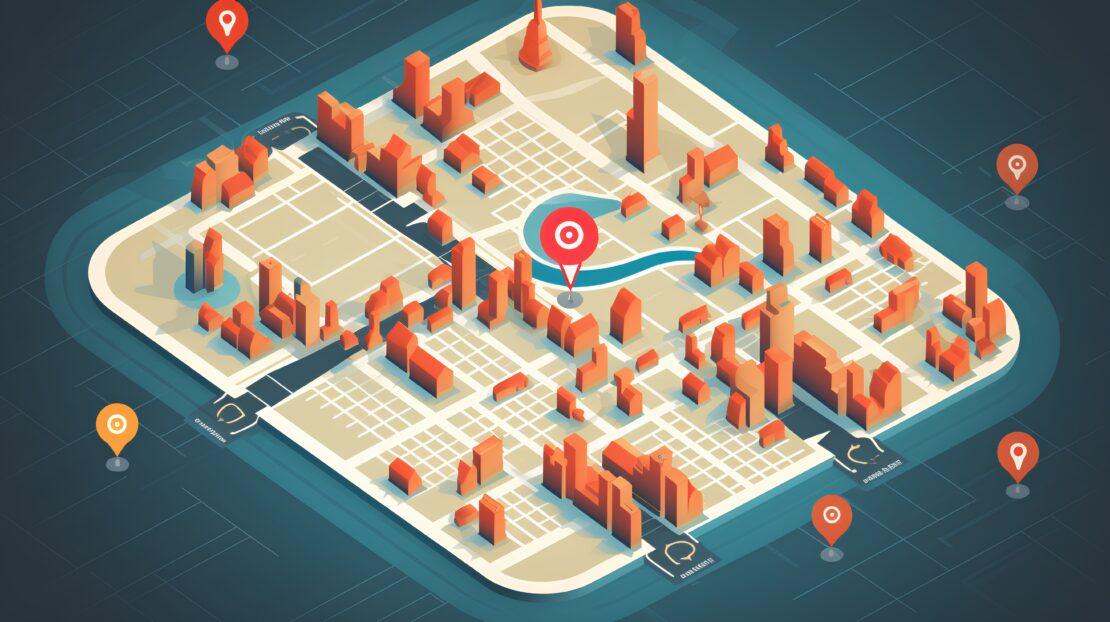Geofencing for Conferences: Why You Should Consider It

Conferences, tradeshows, and similar events present a great opportunity to connect with potential customers or clients. However, it is often not enough to have a presence at a conference; you also need to attract prospects to your booth or table.
Alternatively, you may not be able to attend every conference due to budget or time constraints, but you may still recognize the potential value of getting your brand in front of event attendees, even if you don’t have a physical presence. Whether you want to bring people to your booth or increase brand recognition, you can accomplish either of these objectives, or both, with geofencing.
What Is Geofencing?

Geofencing is a strategy for mobile marketing optimization. When people use the Internet “on the go,” 58% of them prefer to use mobile phones, including smartphones, according to the Office for National Statistics. In other words, even when potential clients travel across the country for a trade show or conference, they are almost certain to bring their cell phones.
How It Works
A geofence uses location-based technology, like Wi-Fi, cellular, and sometimes GPS, to set up a virtual perimeter around a real-world location.
When a person with an active smartphone crosses the perimeter, the geofencing technology sends data to it. This may take the form of advertising on mobile apps or in web browsers.
The area enclosed by a geofence can be almost as wide or narrow as you want. You can set it to target everyone in a five-mile radius, or you can be selective and set it around a particular building or part of a building. In the former case, your geofence is likely to be round, while in the latter case, you may create an irregularly shaped polygon.
What Are the Advantages of Geofencing?

There are several ways that geofencing can help you promote your brand to conference attendees to gain new clients and re-engage with old ones.
Expands Virtual Presence
Conferences can be extremely valuable tools in reaching new clients, but with over 13,000 trade shows and conferences occurring in the U.S. annually, it is simply not feasible to attend every one.
Even if you can’t physically attend a conference, you may want to promote your brand there. That’s where geofencing can help. You can set up a geofence around any venue you wish, regardless of its proximity to your business location. Therefore, attendees at a chosen conference will see your advertising even if you can’t be there in person.
Enables Focused Targeting
When you can attend conferences, your time is best spent drawing the most promising prospects to your table. A marketing technique that extends beyond the boundaries of the event venue is not an efficient one. You may reach potential customers, but you are also likely to get many more people who are not attending the conference and do not need your goods and/or services. Because geofencing can target a specific building or an area within, your advertising will more likely be seen by the people you most want to target.
Improves Relevance
With geofencing, you can target the most valuable prospects and formulate the content to demonstrate how relevant your services are. To accomplish this, you can program a geofence to target people using specific apps or websites related to your business. You can also target specific demographics. However, this involves gathering information about cell phone users, who can opt out whenever they wish.
Optimizes Advertising Efficiency
Because of the ability of geofencing to target a specific location with relevant content, it is a highly efficient use of your advertising dollars compared with other marketing techniques. Not only that, but the cost is usually lower compared to other techniques.
Allows for Follow-Up Contact
When you use geofencing for conferences, your contact with potential clients doesn’t have to end immediately after the event is over. Once a smartphone has interacted with the geofence, you can continue to contact it for days or weeks after the even. People don’t even need to be within the virtual perimeter for this contact to occur. You can use this capability to remind customers of conference-related offers or just send a simple message, such as “See you next year!”
What Other Considerations Should You Keep in Mind?
Almost any business, regardless of industry, can benefit in some way from geofencing. However, before you adopt geofencing for events as a marketing strategy, there are some additional aspects about it you should consider.
Assess the Relevance of Your Advertising
Part of the goal of geofencing is increasing awareness of your brand, particularly with new customers. But, this will not be effective if you don’t show them how your business benefits their situation. A geofencing ad should seek to attract prospects by answering the question, “What’s in it for me?”
Be Mindful of Overlapping Capabilities
In addition to the ability to set up geofences far from your business location, there are no rules, regulations, or technical limitations preventing geofences from overlapping the same area. This is likely to happen at a trade show, where multiple exhibitors are likely to be present, all attempting to attract prospects to their booths.
This ability of multiple geofences to exist in the same area and overlap can be a double-edged sword. On the one hand, nothing prevents you from placing a geofence around a competitor’s location to draw their customers away, which may be to your benefit. On the other hand, nothing can prevent your competitor from placing a geofence around your location to attempt the same thing, which may be to your detriment.
Consider Multiple Geofences
Instead of setting up a wide geofence encompassing the trade show/conference venue, the hotels, and all the space in between, think about setting up multiple geofences around the venue and at least some nearby accommodations.
Remember the Importance of Timing
Part of producing ads relevant to your targeted audience is considering their timing and timeliness. At the beginning of the event, you may send out ads welcoming attendees to the conference. At the end of the first day or the next morning, you can give prospects a preview of what you offer as part of that day’s conference. At the end of the conference, you can encourage potential clients to keep in touch.
Choose an Efficient Location Service
Geofencing can use three different types of location services:
- GPS
- Cellular
- Wi-Fi
Despite its accuracy, GPS is usually not recommended. The reason is that a GPS-based geofencing app consumes a lot of energy, which drains your prospects’ battery life. Crafting targeted, relevant ads won’t do you much good if your potential clients can’t see them due to an inability to turn on their phones. Wi-Fi and cellular services are praised for reliability and are less likely to drain battery life.
Avoid Repetition
Throughout a conference that spans several days, your prospects may cross into and out of your geofence perimeter multiple times. When this happens, you must ensure they do not always see the same message. Otherwise, they’re likely to get annoyed and start tuning it out.
Safeguard Consumer Data
If you collect data on your prospects, you have a responsibility to keep it secure. Failure to do so represents a breach of trust, and you could lose clients as a result.
Learn More About Geofencing
Momentum has over a decade of experience helping businesses thrive in today’s digital world. If you have questions about geofencing or need help building effective ads, contact us today to schedule a consultation.
